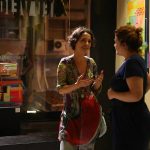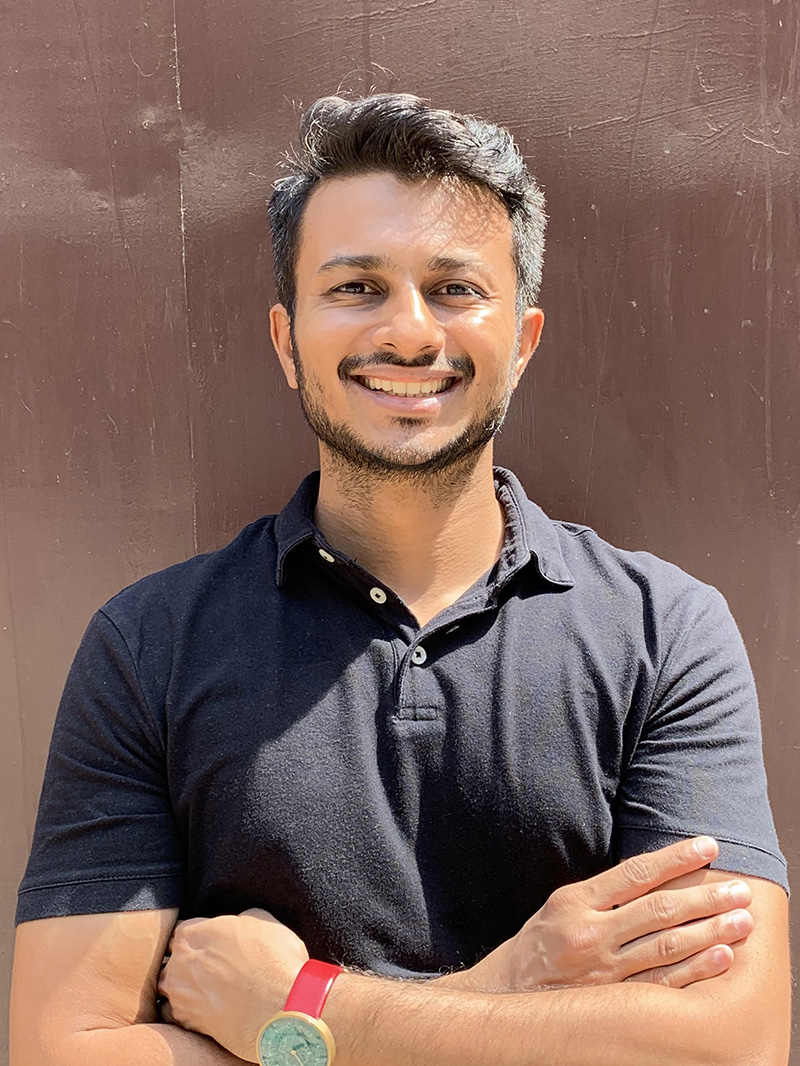Indian contemporary artist Shreyasi Das calls her work “fibre art” so that she can get away with incorporating as many mediums as possible – paper, threads, yarns, fabrics.

Artist interview
Please tell us a little about yourself. How do you describe yourself in the context of challenging people’s perspectives via your work?
By profession, I am a computer graphics artist working in the feature animation industry. I specialize in Shading and Lighting, so I’m always working with textures, color, and light. The job occupies 40+ hours of my week. During my free time, what I crave the most is working on my own creative projects, on my own terms, on themes that resonate deeply with me. I love working with my hands (and avoiding computer screens as much as possible)!
About 2 years ago, I pledged to start building my portfolio in the world of fibre arts and redefine my work as more than just the products of a hobby. I refer to my work as “fibre art” so I can get away with incorporating as many mediums as possible – paper, threads, yarns, fabrics… Suppose I should call myself a mixed-media artist!
I grew up in Kolkata, India, watching the women in my family hand-stitch designs on sarees and blouses; keeping their hands busy with knitting needles; taking measurements of their children to sew their garments; and filling their homes with hand-made art. But I also grew up with a lot of complicated family relationships, battled depression from a young age, and remained quiet through most of my childhood. Like many other children, making art was my therapy, and it still is.
My goal with my art is not to challenge people’s perspectives. All I want is to present the beholder with visually pleasing designs, consciously made with as little waste and as much respect for the environment as possible.
Lets talk about your frameworks, references and creative process.
It all depends on the kind of art I want to make and what is inspiring me at the moment that I start working on a piece. As I hinted above, I am constantly inspired by the environment — by the various textures and patterns that co-exist in nature. There is so much to choose from when drawing inspiration.
I know I said I try to avoid screens as much as possible, but I do use my phone a lot to look at reference photos of nature– from microscopic images to panoramic views — taken by others and by me. I also love to gain inspiration by studying how various artists interpret their surroundings.
Once I start working, I don’t follow these reference photos religiously. Rather, I let the afterimage in my mind guide me. A lot of my work is made instinctively rather than with precise planning.
Other times, I let the texture and color of fabrics and yarn guide me. I start layering, twisting, cutting, fraying… and see what happens. Often, I pick a word to use as a theme and think about it often as I’m working on the piece.
My wish for my future work is to incorporate more personal and emotional themes — things I tried to express as a child but didn’t have the visual vocabulary for.

Let’s talk about the evolution of your practice and medium of art over the years.
As the daughter of Indian parents, I didn’t have much choice but to focus on science and mathematics… until it was time to go to college. My parents and teachers had elaborate plans for my future, but I wanted to pursue a career in the arts instead. It took a lot of persuading, sharing personal art, attending seminars, and crash-courses in digital media before I was hesitatingly allowed to plan for this career. I followed my plan– went to animation school in the USA; completed esteemed internships; and finally attained a stable, full-time job. It felt good to prove myself as an artist.
After 10 years of being in the animation industry I felt like I had achieved everything that I had set out to. A few years ago, while going through old sketches, I recognised my visceral need to work with my hands and go back to creating personal art. It didn’t take much introspection to reveal that I had a strong interest in textiles. I signed up for local workshops. Weaving was the first one and I fell in love with making my own cloth. It felt as fulfilling as it did to watch my drawings come to life in animation school. I also went back to needle arts — something my mother had taught me as a child. Now, I am devoted to learning and practicing as many techniques as possible in weaving and embroidery, so that I have all the tools I need for future big ideas. Most of my creative joy comes from learning.
How do you overcome creative blocks?
Usually, I don’t overcome them because I don’t try to. I probably can afford to do this because my fibre art is not my source of income. If I am not feeling creative, I try to be kind and not force myself..
I also have multiple projects going on at once, in various stages of completion (“works in slow progress”). If I have a creative block on one project it is likely that I am more interested in working on another that I had set down to rest. Most of my work uses muted colors, gentle shapes, and quiet themes. However, I do spend time on brighter commissions of pet portrait embroideries and cartooning! That helps when my mind needs to take a break from my more serious work. One of my biggest struggles as a visual artist is letting myself work loosely or gesturally. I often suffer from being too precise and controlled with my lines and shapes. I hope that as I continue to work, I can be more unfettered with my mark-making.

Tell us about your art studio, what kind of place is it? A day in the life of a visual artist. Could you describe your usual work-day?
Both my husband and I are working from home (in expensive Vancouver, BC) at the moment, so our hefty double-monitor computer setups are occupying all of our tabletops! My “studio” at the moment is the corner of a futon in our one-bedroom apartment and a mini folding table! Our small home is filled with art supplies that I try to keep on display as much as I can to remind myself that my home is my studio. I can’t justify renting a private studio space because this is not what I do full time …yet!
Best piece of art advice, and who was it from?
It’s more of a quote than advice. “Every artist has thousands of bad drawings in them and the only way to get rid of them is to draw them out.” ― Chuck Jones, animated filmmaker and cartoonist. Every time I make something I’m not happy with, I try to tell myself that I am just getting the “bad drawing” out of the way.

What is your source of creative inspiration?
A lot of my creative inspiration comes from textures I see in nature. I am also compelled to reduce waste, so almost all of my work is made from thrifted supplies. The feeling of sharing and inheriting my materials from other artists with their own creative stories is an inspiration in itself.
I also draw a lot of inspiration from artists who are incredibly gestural and free with their artistic expression, unafraid to make their mark. I’m so grateful for the Internet too — where I can readily appreciate and applaud the work of so many artists!
Tell us about your first sale? Do you handle art valuation and sales yourself?
It was fairly recently and it was such a good feeling! I was celebrating every small thing about the first organic sale – writing the ‘thank you’ note, packing it up in a recycled mailer, getting it stamped at the post office, letting the buyer know it was shipped, and tracking its journey to the destination… I felt like a giddy child.
My sales usually take place locally or online via Etsy, because I am starting small. I handle my own art valuation and sales right now, due to the low volume of my work.

Themes you are currently working on?
Recently, I finished working on a small weaving around a theme that is on everyone’s mind right now – “lockdown”. Made from a deconstructed postcard.
I am currently working on a fabric collage on a gouache landscape painting. The theme is “flight”. I’m enjoying the materials and the exploration process on this so much, I may turn it into a series. I have also been working on some weavings inspired by cloudy days on empty beaches and the shifting patterns of sand. And people are starting to plan their holiday gifts, so I have two pet embroidery commissions in the works too!
Artist contact
Before you go – you might like to browse our Artist Interviews. Interviews of artists and outliers on how to be an artist. Contemporary artists on the source of their creative inspiration.












Add Comment